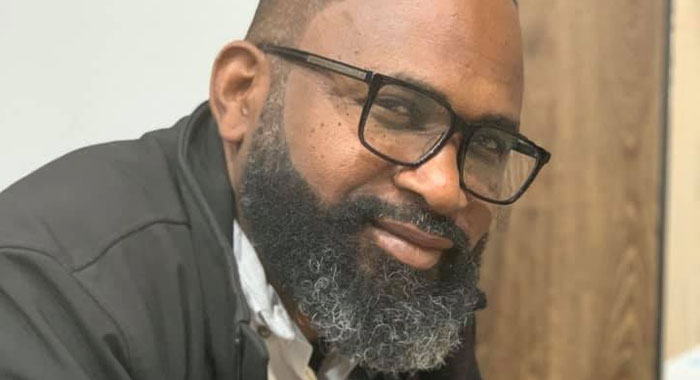By Marlon Bute
This is not a season for lamentations. It’s a season for reimagining our Caribbean civilization into a thriving and prosperous centre of economic activity where our people have a real chance of living their best lives without having to escape to a faraway land to eke out an existence. We must not dwell in the past where reside the horrors of genocide, slavery, indentureship, or colonialism, but we must find strength in the past; avoid its mistakes; and build on the resilience and ambition that have brought us this far, and become dominant in wealth creation. We once did it with cricket, where our small region was the most phenomenal cricketing team in the world.
Albert Einstein once said, “Imagination is everything. It is the preview of life’s coming attractions.” Knowledge, he said, has its limits, but imagination encircles the world. That wisdom must now become our guiding light in the Caribbean.
For too long, our imagination has been stifled by dependency. Our development, we convinced ourselves, was delayed by external pressures. Our dreams distorted by the myth that we must wait for someone else to save us. But it’s we who must save ourselves.
The time has come for the Caribbean, properly speaking, for CARICOM, to reimagine itself, its people, and its future.
The challenges confronting us today are grave, and in truth, they have confronted us for decades. These challenges have only been made starker by the retreat of old alliances and especially by the abandonment of once dependable relationships by the richest and most powerful nation on earth, the United States of America. With the stroke of a pen, the U.S. has imposed tariffs even against its closest allies; Canada, Mexico, Europe, and yes, the Caribbean ; whose fragile economies remain burdened by the legacies of genocide, slavery, indentureship, and colonialism.
In spite of our past, we have come a long way. We have looked inward to develop our institutions, economies, music, and culture — all shaped by the beautiful mosaic of African, Indian, Chinese, Portuguese, European, and Indigenous influences, such as the Garifuna and Kalinago peoples. We are a people of resilience, creativity, and unmatched spirit.
But we must ask ourselves a serious and difficult question: Why, in a region with such rich natural resources; from fertile volcanic soils to oil, bauxite, marine life, and sunshine, are we still so dependent on food imports?
CARICOM’s 15 member states collectively span 462,840 square kilometers. Remarkably, Guyana alone accounts for 214,970 square kilometers, or nearly half of CARICOM’s total land mass. We are not short on space for cultivation. And we are certainly not short on market, with a combined population of 16 million people, our region presents a strong internal economy, if only we choose to connect and organize it better.
Yet, we import almost US$6 billion worth of food annually — about 5% of our region’s GDP. According to CARICOM, some countries in our region import more than 80% of the food they consume. In small island Caribbean states, food accounts for 20% of total imports, compared to just 8% in Latin America. These are not luxuries — they are basic food items we are capable of producing ourselves.
The cost of this dependency is not just economic — it is human. In 2022 alone, 4.1 million people, or 57% of the English-speaking Caribbean, reported food insecurity, according to a joint study by the World Food Programme and CARICOM. That’s more than half of our people unsure of where their next meal will come from.
This is unsustainable. It is unacceptable.
CARICOM’s ambitious “25 by 2025” plan — aimed at reducing the food import bill by 25% by 2025 — is a step in the right direction. But it must move beyond paper and take root in the soil. It must mean investment in our people, in our lands, and in our capacity to feed ourselves.
Take Barbados, or as we say in the Caribbean, the Bajans. They have built a stable, efficient poultry industry, meeting their local demand and serving the tourism sector. We should learn from the Bajans, study their model, and replicate it. Whether each island becomes selfsufficient in poultry, or whether we adopt a clustered model, sharing production and supply among a few islands, we must eliminate unnecessary imports of chicken backs, wings, and leg quarters.
Now consider rice — another staple we consume heavily. In 2023, Guyana produced nearly
GY$50 billion worth of rice, with a 7% increase over the previous year. St. Vincent and the
Grenadines already has a modern rice mill, a flour mill, and a feed mill. What we need now is a regional supply chain: Guyanese rice grown in volume, milled and processed in St. Vincent, and distributed across the Caribbean. Similarly, St. Vincent’s feed mill can support poultry and pig production across the region.
This is the model: a symbiotic Caribbean economy, where we produce for each other, consume what we produce, and export together.
My father, 84 years old, is a long retired police officer and public servant. Today, he’s a full-time pig farmer in St. Vincent and the Grenadines. He represents what is good and noble about our people; resilience, dignity, and hard work. But like many local pig farmers, he must compete with imported pork from large farms somewhere in a southern U.S. state. These are farms that are subsidized by the U.S. government and protected by economies of scale.
And we must ask ourselves: Is the quality of pork exported to “third world countries” as the same quality served on the American dinner table? Are U.S. food safety inspections for exported pork and poultry as rigorous as those for American consumers?
If you doubt that they are, you are certainly not alone.
This is not just about economics. This is about our health, our sovereignty, our dignity, and our survival.
We import beef and pork that we can raise ourselves. We import cereals, cornflakes, oats, rice, when we have land to grow grain and mills to process it. We import peanut butter and ketchup, but we grow peanuts and tomatoes. We import fruit juices, but we have mangoes, guavas, oranges, bananas, pineapples, and watermelons by the tons.
We have what it takes. We have fertile volcanic soil in St. Vincent, Dominica, St. Lucia, and
Jamaica. We have the technical capacity. We have the University of the West Indies, the
Caribbean Development Bank, and strong national and central banks. We have bright, disciplined people. We have partners in Brazil, India, and Africa who can help us develop hybrid crops, improve irrigation, and expand agro-processing.
And we must never forget: we gave the world music. We gave the world steel pan, reggae, soca, calypso, and chutney; not just genres, but billion dollar cultural assets born from struggle, rhythm, and resistance. If we can inspire the world with our sound, surely we can feed our region with our soil.
We have the will among the people.
Now we need the leadership.
We also need targeted investment in the right areas.
We must modernize farming by introducing new equipment and tools to increase production capacity and reduce labor intensity. We need to roll out a “basket of incentives” to support our farmers and to attract youth and women into agriculture. This package must include technical training, grants, and low interest loans with deferred payment terms to encourage sustainable entry into farming.
We must invest in fisheries; in new boats, technologies, and techniques; in cold rooms for preservation; in abattoirs for hygienic, safe and efficient slaughtering of livestock; in fish processing facilities; and in better access to regional and export markets.
We must embrace renewable energy; solar, wind, hydro, to power our communities and reduce dependence on expensive imported fossil fuels.
And we must facilitate inter-island trade and travel. That means investing in ferries and cargo boats, and creating real incentives for entrepreneurs and cooperatives to develop marine transportation. We are one region, and we must be connected not just in spirit, but by water.
We must also invest in the trades: carpentry, masonry, plumbing, welding, electrical work; all the practical skills required to build the homes, factories, furniture and facilities of the Caribbean future.
Each island, each territory, each community has a role to play in this symbiotic regional economy. We don’t all need to do the same thing. But we all need to do something. And we need to do it well, and together.
Let us build a Caribbean economy where we produce, process, and distribute our own food; where we trade with each other efficiently and affordably; and where we train and empower our people to take ownership of every stage in the value chain; from the farm and sea to the shelf and the export market.
This is not a fantasy. It is a future waiting to be built. Our small farmers and businesspeople have already shown what is possible. Our diaspora has conquered hostile foreign worlds and laid roots, built businesses, and made contributions in science, education, culture, and the arts.
We are not poor. We are rich in resources, rich in talent, rich in resilience, and rich in culture. What we lack is belief. What we need is action.
CARICOM must act.
The time for conferences and memoranda is over.
The time to build is now.
Let us feed ourselves, employ ourselves, process what we grow, and trade what we make.
Let this be our moonshot, not a dream, but a direction.
We owe it to ourselves.
We owe it to our children.
The Caribbean must rise.
This is a call for every island, and for CARICOM as a whole, to invest boldly and heavily in its productive sectors. To bet on its people.
Let us no longer doubt our worth or wait for rescue. Let us take command of our future, together.

